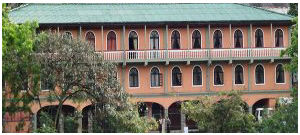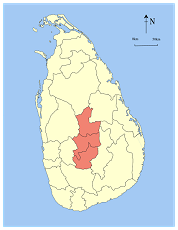Department of Health Services-Central Province
 With the implementation of Provincial Council Act in 1989, the centrally governed health services were devolved, resulting in the Ministry of Health at the national level and separate Ministries of Health in the nine provinces.
With the implementation of Provincial Council Act in 1989, the centrally governed health services were devolved, resulting in the Ministry of Health at the national level and separate Ministries of Health in the nine provinces.
In the Central Province, the Department of Provincial Health Services is under the Ministry of Health, Indigenous Medicine, Social Welfare, Probation & Child care Services. There is a Minister and a Secretary to the Ministry.
The department is responsible for the management and effective implementation of health services, the development of policies and guidelines and the management of human resources within the Province.
The Provincial Director is the head of the Provincial Department of Health Services. There are 3 Regional Directors of Health Services(RDHS) for the province with each covering an area geographically similar to the administrative units of district secretariats.

Each RDHS area comprises of several divisional secretary areas in which the responsibility of preventive health care lie within the respective Medical officers of Health (MOH). The provision of curative care occurs through the primary, secondary and tertiary health care institutions scattered through the province. The Medical Superintendents (MS), District Medical Officers or Medical Officers In Charge (MOIC) carry out the latter responsibility through their institutions.
There are a total of 158 primary, secondary and tertiary health care institutions in the province with 77 in Kandy, 35 in Matale and 46 in Nuwara Eliya.
The Central Province of Sri Lanka
T he Central Province is located in the central hills of Sri Lanka and consists of the three Districts Kandy, Matale and Nuwara Eliya. The land area of the Province is 5674 square kilometers which is 8.6% of the total land area of Sri Lanka. The Province lies on 6.6°- 7.7° Northern latitude and between 80.5°-80.9° Eastern longitudes. The elevation in the Province ranges from 600 feet to over 6000 feet above sea level in the central hills. The Province is bordered by the North Central Province from the North the Mahaweli river and Uma Oya from the east to the south from the mountain range of Adams peak, Kirigalpottha and Thotapala and the mountain ranges Dolosbage and Galagedera from the west.
he Central Province is located in the central hills of Sri Lanka and consists of the three Districts Kandy, Matale and Nuwara Eliya. The land area of the Province is 5674 square kilometers which is 8.6% of the total land area of Sri Lanka. The Province lies on 6.6°- 7.7° Northern latitude and between 80.5°-80.9° Eastern longitudes. The elevation in the Province ranges from 600 feet to over 6000 feet above sea level in the central hills. The Province is bordered by the North Central Province from the North the Mahaweli river and Uma Oya from the east to the south from the mountain range of Adams peak, Kirigalpottha and Thotapala and the mountain ranges Dolosbage and Galagedera from the west.
The mean temperature ranges from 16°C - 28°C in the Province where lower temperatures are recorded in hills in the Nuwara Eliya District. In the Central Province 52% of the land has been cultivated while another 6.3% has been identified as lands which can be cultivated. Of the lands cultivated more than 35% has been cultivated with tea while 14.8% has been cultivated with paddy. The percentage of lands cultivated with coconut and rubber is 4.8% and 2.3% respectively.
For the purpose of administration the Central Province has 36 Divisional Secretary areas in the 3 Districts. They are further divided into 2,224 Grama Niladari areas, 5,763 villages and local government bodies comprising 3 municipality council and 6 urban council areas.
The Provincial administration is vested in the Central Provincial Council composed of elected representatives of the people, headed by a Governor who is appointed by His Excellency the President. According to the census data 2001 the total population of Central province was 2,418,110 and the estimated population for 2007 was 2,549,917. The annual growth rate for 2007 was 0.9%. The population density for the Central Province was 433 persons per square kilometer. According to the 2001 census data 70.0%, 20.2% and 9.8% of the population were classified as rural, estate and Urban respectively.









